Pass Your Amazon AWS DevOps Engineer Professional Exam Easy!
Amazon AWS DevOps Engineer Professional Exam Questions & Answers, Accurate & Verified By IT Experts
Instant Download, Free Fast Updates, 99.6% Pass Rate
Amazon AWS DevOps Engineer Professional Practice Test Questions in VCE Format
Amazon AWS DevOps Engineer Professional Practice Test Questions, Exam Dumps
Amazon AWS DevOps Engineer Professional (AWS DevOps Engineer - Professional (DOP-C01)) exam dumps vce, practice test questions, study guide & video training course to study and pass quickly and easily. Amazon AWS DevOps Engineer Professional AWS DevOps Engineer - Professional (DOP-C01) exam dumps & practice test questions and answers. You need avanset vce exam simulator in order to study the Amazon AWS DevOps Engineer Professional certification exam dumps & Amazon AWS DevOps Engineer Professional practice test questions in vce format.
The Foundation of Your AWS DevOps Engineer Professional Journey
The journey to achieving the AWS Certified DevOps Engineer Professional certification is a significant undertaking that signals a deep level of expertise in cloud automation, continuous delivery, and operational management. This certification is not merely an exam to be passed but a validation of your ability to design and maintain robust, scalable, and secure systems on the world's leading cloud platform. It represents a commitment to the principles of DevOps, which blend software development and IT operations to shorten the development lifecycle and provide continuous delivery with high software quality. For many, this is the next logical step in their career.
Pursuing this advanced certification requires dedication and a strategic approach. It is designed for individuals who have hands-on experience implementing and managing continuous delivery systems and methodologies on AWS. The preparation process itself is a valuable learning experience, forcing you to delve into the intricacies of AWS services and how they integrate to form a cohesive, automated ecosystem. Aspiring candidates often find themselves navigating a sea of information, and my goal here is to provide a structured path based on proven experience, helping you transform your ambition into a tangible achievement that can elevate your career prospects.
Deconstructing the DevOps Philosophy on AWS
At its core, DevOps is a cultural and professional movement that emphasizes communication, collaboration, and integration between software developers and IT operations professionals. AWS provides a rich toolkit that enables organizations to fully embrace this philosophy. The AWS DevOps Engineer Professional exam tests your ability to leverage these tools effectively. This means understanding how to automate the software development lifecycle, from code commit to production deployment, using services that work together seamlessly. It’s about more than just knowing individual services; it’s about architecting solutions that embody the DevOps principles of speed, reliability, and scale.
This philosophy extends to infrastructure management through the practice of Infrastructure as Code (IaC). Instead of manually configuring servers and networks, you define your entire infrastructure in code using services like AWS CloudFormation or the AWS Cloud Development Kit (CDK). This allows for versioning, peer review, and automated provisioning of environments, which dramatically reduces human error and increases consistency. A certified AWS DevOps Engineer Professional is expected to be fluent in these practices, capable of creating templates that provision everything from virtual private clouds (VPCs) to complex, containerized microservices architectures with precision and repeatability.
Understanding the Exam Blueprint and Domains
Before diving into preparation, it is crucial to thoroughly understand the exam’s structure and the domains it covers. The AWS DevOps Engineer Professional exam is a 180-minute assessment consisting of 75 multiple-choice, multiple-answer questions. The passing score is 750 out of 1000. This format demands not only deep technical knowledge but also the ability to read and interpret complex scenarios quickly and accurately. The exam is designed to test your practical application of knowledge, often presenting you with a business problem and asking for the most effective, secure, or cost-efficient AWS solution.
The exam content is broken down into six distinct domains, each with a specific weighting. These include SDLC Automation, Configuration Management and Infrastructure as Code, Monitoring and Logging, Policies and Standards Automation, Incident and Event Response, and High Availability, Fault Tolerance, and Disaster Recovery. A successful preparation strategy involves allocating your study time in proportion to the weight of each domain. This ensures that you focus your energy on the areas that will have the most significant impact on your final score, while still building a comprehensive understanding across the entire spectrum of skills tested.
Essential Prerequisites: Knowledge and Hands-On Experience
This certification is designated as "Professional" for a reason. It assumes a significant baseline of knowledge and practical experience. It is highly recommended that candidates have at least two years of hands-on experience provisioning, operating, and managing AWS environments. This experience is the foundation upon which your exam-specific knowledge will be built. Without it, the scenario-based questions can be abstract and difficult to decipher. The exam tests your ability to make informed decisions based on real-world constraints, a skill that is honed through practice and application, not just theoretical study.
Furthermore, proficiency in at least one high-level programming language, such as Python, Go, or JavaScript, is strongly advised. Many AWS services, particularly AWS Lambda, require you to write code to automate processes or extend functionality. You should also be comfortable with command-line interfaces and scripting in Linux or Windows environments. A deep understanding of modern development and operations methodologies, including agile principles, is also essential. The AWS DevOps Engineer Professional is not just a technician but a strategist who understands how to apply technology to improve business processes and delivery cycles.
A Personal Perspective on Career Advancement
For me, the decision to pursue the AWS DevOps Engineer Professional certification was driven by a desire for career growth. Working as a cloud associate provided a solid foundation, but I recognized that the industry was rapidly moving towards a DevOps-centric model. The benefits of this approach—faster time to market, improved operational stability, and enhanced collaboration—were becoming increasingly clear. Earning this certification felt like the most direct and effective way to align my skills with the future direction of the cloud industry and position myself for more challenging and rewarding opportunities.
The journey was demanding, but the outcome was profoundly gratifying. Achieving a score of 902 was a testament to the rigorous preparation and hands-on practice invested. This certification is undoubtedly one of the more difficult exams in the AWS portfolio. It requires a holistic understanding of the platform and the ability to think like an architect, a developer, and an operations engineer simultaneously. The confidence gained from passing this exam extends far beyond the certificate itself; it instills a deep-seated belief in your ability to solve complex technical challenges at a professional level.
Setting Up Your Study Environment for Success
Creating a conducive study environment is a critical first step that is often overlooked. Your preparation for the AWS DevOps Engineer Professional exam will require focused, uninterrupted periods of learning. Designate a physical space that is free from distractions where you can concentrate fully on the material. Ensure you have a reliable internet connection and a comfortable setup, as you will be spending many hours reading documentation, watching training videos, and working in the AWS Management Console. This dedicated space helps signal to your brain that it is time to learn, improving retention and focus over time.
Beyond the physical environment, it is equally important to set up your digital environment. Create an AWS account specifically for your studies. The Free Tier offers a fantastic opportunity to gain hands-on experience with many of the services that will appear on the exam without incurring significant costs. Use this account to build, experiment, and even break things. Practical application is key to solidifying theoretical concepts. Set up your local machine with the AWS CLI and any necessary SDKs. This hands-on interaction is invaluable and will be the key to answering many of the exam's scenario-based questions.
The Importance of a Structured Study Plan
A well-defined study plan is the roadmap that will guide you from your starting point to exam success. Without a plan, it is easy to become overwhelmed by the vast amount of information you need to cover. Begin by reviewing the official exam guide in detail. Note the weighting of each domain and use this to structure your schedule. Allocate more time to the heavily weighted domains like SDLC Automation and Configuration Management, but ensure you cover all topics thoroughly. A systematic approach prevents knowledge gaps and builds a comprehensive understanding of the entire DevOps lifecycle on AWS.
Divide your schedule into manageable chunks. For example, you might dedicate a week to each domain, with time set aside for hands-on labs and practice questions at the end of each week. This iterative process of learning, applying, and testing is highly effective. Be realistic about the time you can commit each day or week, and stick to your schedule as consistently as possible. Consistency is more important than intensity. A steady, well-paced preparation journey is far more effective than last-minute cramming and leads to deeper, more lasting knowledge that will serve you well in the exam and in your professional role.
Automating the Software Development Lifecycle
The first and most heavily weighted domain in the AWS DevOps Engineer Professional exam is SDLC Automation. This area focuses on your ability to design and implement a complete continuous integration and continuous delivery (CI/CD) pipeline on AWS. The goal is to create a fully automated workflow that takes code from a developer's repository, builds it, tests it, and deploys it to various environments with minimal human intervention. This requires a deep and practical understanding of the AWS CodeSuite, which includes AWS CodeCommit, AWS CodeBuild, AWS CodeDeploy, and AWS CodePipeline.
Mastery of this domain means you can architect a pipeline that is not only functional but also secure, resilient, and efficient. You will be tested on your ability to choose the right service for a specific task and to integrate them seamlessly. For example, a scenario might ask how to trigger a pipeline automatically upon a code push, run unit tests in a clean environment, deploy to a staging environment for integration testing, and then require manual approval before a production deployment. Success requires knowing the features and limitations of each service and how they interact to achieve a desired outcome.
Deep Dive into AWS CodeCommit and Version Control
AWS CodeCommit is a fully-managed source control service that hosts secure and highly scalable private Git repositories. For the exam, you need to understand more than just basic Git commands. You should be familiar with CodeCommit's integration with AWS Identity and Access Management (IAM) for controlling access to your repositories. This includes setting up IAM users with Git credentials, creating policies that grant specific permissions (e.g., read-only vs. full access), and using roles for cross-account access. Security is a recurring theme, and securing your source code is the first step.
The exam will also likely test your knowledge of repository triggers. CodeCommit triggers can be used to invoke AWS Lambda functions or send notifications to Amazon Simple Notification Service (SNS) topics in response to repository events like a push to a specific branch. This is a fundamental mechanism for initiating a CI/CD pipeline. You should also be prepared for questions on migrating existing repositories from other platforms, like GitHub or an on-premises Git server, to AWS CodeCommit, understanding the different strategies and tools available for such a migration.
Building and Testing with AWS CodeBuild
AWS CodeBuild is a fully managed continuous integration service that compiles source code, runs tests, and produces software packages that are ready to deploy. A critical concept to master for the exam is the buildspec.yml file. This is a collection of build commands and related settings, in YAML format, that CodeBuild uses to run a build. You must understand the structure of this file, including its different phases (install, pre_build, build, post_build) and how to define environment variables, install dependencies, and specify artifacts to be produced from the build process.
You will also need to know about the different build environments CodeBuild provides, which are Docker images managed by AWS. Understand how to use these curated environments and when it might be necessary to create and use a custom Docker image for your build process. Caching is another important topic; know how to configure CodeBuild to cache dependencies to speed up build times. Finally, understand CodeBuild's integration with other services, such as pulling source from CodeCommit or S3 and pushing build artifacts to S3 for later use in a deployment stage.
Mastering Deployment Strategies with AWS CodeDeploy
AWS CodeDeploy is a service that automates code deployments to a variety of compute services, including Amazon EC2 instances, on-premises servers, AWS Fargate, and AWS Lambda. The AWS DevOps Engineer Professional exam will test your understanding of different deployment strategies. You must know the difference between an in-place deployment, which updates the application on an existing set of instances, and a blue/green deployment, which shifts traffic from an old fleet of instances to a new one. Understand the pros and cons of each, particularly regarding downtime, rollback capabilities, and cost.
A key component of CodeDeploy is the Application Specification file, or AppSpec.yml. Similar to CodeBuild's buildspec file, you need to be intimately familiar with the structure of the AppSpec file. Understand how to define the source and destination of your application files and, most importantly, how to use hooks to run scripts at various points in the deployment lifecycle. These hooks, such as BeforeInstall, AfterInstall, and ApplicationStart, give you granular control over the deployment process. Also, be prepared for questions on deployment groups, deployment configurations (e.g., one at a time vs. half at a time), and automated rollback configurations.
Orchestrating the Pipeline with AWS CodePipeline
AWS CodePipeline is the service that ties everything together. It is a fully managed continuous delivery service that helps you automate your release pipelines for fast and reliable application and infrastructure updates. For the exam, you must understand the core concepts of a pipeline: stages, actions, and transitions. A pipeline is made up of a series of stages, such as Source, Build, and Deploy. Each stage contains one or more actions, which are tasks performed on your application code, like pulling from a CodeCommit repository or deploying using CodeDeploy.
You need to know how to construct a multi-stage pipeline and how to configure different action providers. This includes integrating with third-party tools as well as native AWS services. A common scenario involves creating a pipeline that automatically builds and deploys to a staging environment, then pauses for a manual approval action before proceeding to deploy to production. Understand how to pass artifacts between stages and how to troubleshoot a failed pipeline execution by examining the execution details and logs for each action.
The Core of DevOps: Infrastructure as Code (IaC)
The second exam domain, Configuration Management and Infrastructure as Code, is central to the DevOps philosophy. IaC is the practice of managing and provisioning your cloud infrastructure through machine-readable definition files rather than physical hardware configuration or interactive configuration tools. The primary AWS service for IaC is AWS CloudFormation. The AWS DevOps Engineer Professional exam requires you to have an expert-level understanding of CloudFormation, including its syntax, features, and best practices. You should be able to read, understand, and author complex CloudFormation templates in either JSON or YAML.
Your knowledge should extend beyond basic resource creation. You need to understand advanced concepts like parameters for template reusability, mappings for conditional values, outputs for exporting values to other stacks, and conditions for creating resources based on specific criteria. Intrinsic functions, which are built-in functions that help you manage your stacks, are also a critical topic. You must know how and when to use functions like Fn::Join, Fn::Select, Fn::GetAtt, and Ref to create dynamic and flexible templates that can adapt to different environments.
Advanced CloudFormation Techniques
To excel on the exam, you must be familiar with more advanced CloudFormation capabilities. This includes understanding how to use change sets to preview the changes a template will make to your environment before you execute them. This is a vital safety mechanism to prevent unintended consequences. You should also know about stack policies, which are JSON documents that prevent updates to critical stack resources, protecting them from accidental deletion or modification during a stack update. This is a key aspect of operational safety in a production environment.
Another advanced topic is nested stacks, which allow you to break down a large, complex template into smaller, reusable components. This promotes modularity and makes your infrastructure code easier to manage and maintain. Furthermore, you should be familiar with AWS CloudFormation StackSets, which enable you to create, update, or delete stacks across multiple AWS accounts and regions with a single operation. This is essential for organizations that need to maintain consistent infrastructure configurations across a widespread cloud footprint. Understanding these advanced features demonstrates a professional level of competency.
Exploring the AWS Cloud Development Kit (CDK)
While CloudFormation is the foundational IaC service, the AWS Cloud Development Kit (CDK) is an increasingly important tool in the modern DevOps toolkit. The CDK is an open-source software development framework that lets you define your cloud application resources using familiar programming languages like TypeScript, Python, Java, and C#. The CDK code is then synthesized into a standard AWS CloudFormation template. For the AWS DevOps Engineer Professional exam, you should have a conceptual understanding of what the CDK is and the problems it solves.
The key advantage of the CDK is that it allows you to use the power of a general-purpose programming language to define your infrastructure. This means you can use loops, conditional logic, and object-oriented programming to create abstractions and reusable components, leading to more concise and manageable infrastructure code. While you may not be asked to write CDK code on the exam, you should be able to recognize what it is and understand its relationship to CloudFormation. A question might present a scenario where the CDK would be a more suitable choice than raw CloudFormation templating.
The Pillars of Observability on AWS
The third domain of the AWS DevOps Engineer Professional exam, Monitoring and Logging, is fundamental to operating reliable and performant systems. This domain moves beyond simply building and deploying applications and into the critical phase of running them in production. A key concept is observability, which is the ability to understand the internal state of a system from the outside by examining the data it generates, such as logs, metrics, and traces. On AWS, the primary services for achieving observability are Amazon CloudWatch, AWS CloudTrail, and AWS X-Ray.
To succeed in this domain, you must demonstrate a deep understanding of how to implement a comprehensive monitoring strategy. This isn't just about setting up a few alarms; it's about proactively instrumenting your applications and infrastructure to emit the necessary data to detect, diagnose, and resolve issues quickly. You will be tested on your ability to design monitoring solutions that provide visibility across all layers of your stack, from the underlying AWS resources to the application code itself. A successful AWS DevOps Engineer Professional knows that what you can't measure, you can't improve.
Comprehensive Monitoring with Amazon CloudWatch
Amazon CloudWatch is the cornerstone of monitoring on AWS. It is a monitoring and observability service that collects data in the form of logs, metrics, and events. For the AWS DevOps Engineer Professional exam, you need an expert-level understanding of CloudWatch Metrics. This includes knowing the difference between standard metrics, which are provided automatically by many AWS services, and custom metrics, which you can publish from your own applications or scripts. You should know how to use the CloudWatch agent to collect detailed system-level metrics from EC2 instances and on-premises servers.
CloudWatch Alarms are another critical component. You must know how to create alarms based on static thresholds, as well as more advanced features like anomaly detection and composite alarms. Composite alarms allow you to combine multiple other alarms into a single, overarching alarm state, reducing alarm noise and helping you focus on the root cause of an issue. Understanding how to configure alarm actions, such as sending notifications to an Amazon SNS topic or triggering an Amazon EC2 Auto Scaling action, is essential for building self-healing systems.
Centralizing and Analyzing Logs
Effective log management is another key aspect of this domain. You must be proficient with Amazon CloudWatch Logs. This includes understanding the hierarchy of log groups, log streams, and log events. A common task for a DevOps professional is to configure applications and AWS services to send their logs to CloudWatch Logs for centralized storage and analysis. This often involves using the CloudWatch Logs agent on EC2 instances or configuring services like AWS Lambda and Amazon ECS to stream their logs directly.
Once logs are in CloudWatch, you need to know how to work with them. This includes using CloudWatch Logs Insights to run powerful, ad-hoc queries to search and analyze your log data. For the exam, you should be familiar with the query syntax and be able to construct queries to find specific information within a large volume of logs. Another important pattern is streaming logs to other services for long-term storage or advanced analysis. Know how to set up a subscription filter to stream logs in real-time to services like Amazon S3, Amazon Kinesis Data Streams, or AWS Lambda.
Tracing and Debugging with AWS X-Ray
While metrics provide quantitative data about your system's performance and logs provide detailed event records, traces provide a view of the entire lifecycle of a request as it travels through your distributed application. AWS X-Ray is the service that provides this capability. For the AWS DevOps Engineer Professional exam, you need to understand how X-Ray helps you analyze and debug production, distributed applications, such as those built using a microservices architecture. It allows you to identify performance bottlenecks and pinpoint the root cause of errors.
You should understand the core components of X-Ray, including segments, subsegments, and traces. Know how to instrument your application code using the X-Ray SDK to send trace data to the X-Ray service. The exam may present scenarios where you need to identify why a particular user request is slow or failing. Understanding how to read an X-Ray service map to visualize the connections between your application's components and how to analyze trace data to find the source of high latency or errors is a key skill that will be tested.
Automating Governance and Compliance
The fourth domain, Policies and Standards Automation, focuses on ensuring that your AWS environment operates in a secure and compliant manner. In a DevOps model, these checks and controls should not be manual, but rather automated and integrated directly into your CI/CD pipelines and operational workflows. This involves using AWS services to define, enforce, and audit your security and governance policies at scale. A certified AWS DevOps Engineer Professional must be able to implement solutions that maintain a high level of security without sacrificing development velocity.
This domain tests your ability to translate organizational policies into automated controls. For example, a policy might state that all S3 buckets must have encryption enabled or that no EC2 security groups should allow unrestricted inbound access. You need to know which AWS services to use to automatically detect and remediate violations of these policies. This is about shifting security left in the development lifecycle and embedding it into every part of your infrastructure and application delivery process, a concept often referred to as DevSecOps.
Identity and Access Management (IAM) for DevOps
AWS Identity and Access Management (IAM) is the foundation of security in AWS, and you are expected to have a deep understanding of it. This goes beyond creating users and attaching policies. You must understand the principle of least privilege and how to craft fine-grained IAM policies that grant only the necessary permissions. Be prepared for questions on IAM roles, which are a secure way to delegate permissions to AWS services or users without using long-term access keys. For example, you should know how to assign an IAM role to an EC2 instance or a Lambda function.
A key topic for the AWS DevOps Engineer Professional exam is the use of IAM in a CI/CD context. For instance, you should know how to configure permissions for your CodeBuild project or your CodeDeploy deployment group so that they have exactly the permissions they need to perform their tasks and nothing more. This might involve creating a specific IAM role for your pipeline and attaching a carefully crafted policy to it. Understanding cross-account access using IAM roles is also important for scenarios where you need to manage resources in multiple AWS accounts.
Enforcing Standards with AWS Config
AWS Config is a service that enables you to assess, audit, and evaluate the configurations of your AWS resources. It is a critical tool for automating compliance and governance. For the exam, you must understand how AWS Config continuously monitors and records your AWS resource configurations. You should know how to use AWS Config Rules to automatically check whether your resources comply with your internal policies and best practices. There are managed rules provided by AWS, and you should also know that you can create your own custom rules using AWS Lambda.
A common scenario involves using AWS Config to detect non-compliant resources and then using its integration with other services to automatically remediate the issue. For example, if AWS Config detects an S3 bucket that is publicly accessible, it could trigger a Lambda function or an AWS Systems Manager Automation document to change the bucket's policy and make it private. This automated detection and response loop is a powerful pattern for maintaining continuous compliance in your environment, and you should be prepared to design such solutions.
Security Automation and Best Practices
This domain also covers a broader set of security automation topics. You should be familiar with AWS Secrets Manager and AWS Systems Manager Parameter Store for securely storing and managing secrets like database credentials, API keys, and passwords. Understand the difference between the two services and when to use each. Know how to retrieve these secrets from your application code or CI/CD scripts without hardcoding them, which is a major security anti-pattern. The ability to rotate secrets automatically is another key feature you should be familiar with.
You should also have knowledge of services like Amazon GuardDuty for intelligent threat detection and AWS Security Hub for a centralized view of your security alerts. While you may not need to be an expert in every feature of these services, you should understand their purpose and how they fit into a comprehensive, automated security strategy. The exam will test your ability to think holistically about security and to design solutions that are secure by default, integrating security controls into every stage of the DevOps lifecycle.
Building Highly Available and Fault-Tolerant Systems
The fifth domain of the AWS DevOps Engineer Professional exam covers Incident and Event Response, while the sixth and final domain focuses on High Availability, Fault Tolerance, and Disaster Recovery. These topics are deeply intertwined and represent the operational heart of the DevOps role. Your primary responsibility is to ensure that the systems you build are resilient, can withstand failures, and can recover quickly when incidents do occur. This requires a proactive approach to architecture and a reactive plan for when things go wrong.
High availability means designing your systems to avoid single points of failure. On AWS, the fundamental building block for this is the use of multiple Availability Zones (AZs) within a region. An AZ is one or more discrete data centers with redundant power, networking, and connectivity. For the exam, you must be able to design architectures that distribute application components and data across multiple AZs. This ensures that the failure of a single data center does not bring down your entire application, a core principle you will be tested on repeatedly.
Leveraging Elastic Load Balancing and Auto Scaling
Two of the most important services for building highly available and scalable applications are Elastic Load Balancing (ELB) and Amazon EC2 Auto Scaling. You must have an expert-level understanding of how these services work together. ELB distributes incoming application traffic across multiple targets, such as EC2 instances, in multiple Availability Zones. This not only improves availability but also allows you to scale your application horizontally. You should know the different types of load balancers—Application Load Balancer (ALB), Network Load Balancer (NLB), and Gateway Load Balancer (GLB)—and the use cases for each.
Amazon EC2 Auto Scaling allows you to automatically adjust the number of EC2 instances in your fleet based on demand or a schedule. You should know how to configure launch templates or launch configurations, which define the EC2 instances that will be launched. More importantly, you need to master scaling policies. Understand the difference between target tracking, step scaling, and simple scaling policies. You should also be familiar with scheduled scaling and predictive scaling. The exam will present scenarios where you must choose the most appropriate scaling strategy to meet performance requirements while optimizing for cost.
Effective Disaster Recovery Strategies on AWS
Disaster recovery (DR) is the process of preparing for and recovering from a disaster, which could be a natural event or a catastrophic system failure that affects an entire AWS region. For the AWS DevOps Engineer Professional exam, you need to be familiar with common DR strategies on AWS. This includes understanding two key metrics: Recovery Time Objective (RTO), which is the maximum acceptable delay between the interruption of service and restoration of service, and Recovery Point Objective (RPO), which is the maximum acceptable amount of time since the last data recovery point.
You should know the different DR strategies and their trade-offs in terms of cost, complexity, RTO, and RPO. These strategies range from simple backup and restore, which is the least expensive but has the highest RTO/RPO, to more complex setups. Be familiar with the pilot light approach, where a minimal version of your environment is always running in the DR region. Also, understand the warm standby and multi-site active-active strategies, which offer progressively lower RTO/RPO at a higher cost. A question might describe a business requirement for RTO/RPO and ask you to select the most appropriate DR strategy.
Automating Incident and Event Response
When an incident occurs, a DevOps professional's goal is to detect, respond to, and resolve it as quickly as possible, ideally through automated means. This domain tests your ability to build systems that can automatically respond to operational events. Amazon EventBridge is a key service here. It is a serverless event bus that makes it easy to connect applications together using data from your own apps, integrated SaaS applications, and AWS services. You should understand how to create EventBridge rules that match specific events and route them to targets for processing.
A common pattern is to use an event, such as a CloudWatch Alarm entering the ALARM state, to trigger a response. The target of the EventBridge rule could be an AWS Lambda function that performs a corrective action, an AWS Systems Manager Automation document that orchestrates a series of steps, or an Amazon SNS topic that notifies the on-call engineer. The exam will test your ability to design these automated response workflows to handle common operational issues, such as a failed health check or a security vulnerability detection, reducing the need for manual intervention.
AWS Systems Manager for Operational Excellence
AWS Systems Manager (SSM) is a comprehensive suite of tools that provides operational insights and enables you to take action on your AWS resources. For the AWS DevOps Engineer Professional exam, a deep knowledge of several SSM capabilities is essential. You must understand Systems Manager Automation, which allows you to author runbooks to carry out common operational tasks, such as patching a fleet of instances or creating a golden AMI. These automation documents can be triggered manually, on a schedule, or in response to events.
You should also be an expert in Systems Manager Run Command, which lets you remotely and securely manage the configuration of your managed instances at scale without needing to SSH or RDP into them. Another critical feature is Session Manager, which provides secure and auditable instance management without the need to open inbound ports or manage SSH keys. Finally, understand Parameter Store for securely storing configuration data and secrets. The exam will often present operational challenges that can be solved most efficiently using one or more capabilities of AWS Systems Manager.
Database Resiliency with Amazon RDS
Your data tier is often the most critical part of your application, and ensuring its availability and durability is paramount. The exam will test your knowledge of how to operate relational databases on AWS using Amazon Relational Database Service (RDS). A key feature for high availability is a Multi-AZ deployment. You must understand that in a Multi-AZ configuration, RDS automatically provisions and maintains a synchronous standby replica in a different Availability Zone. In the event of an infrastructure failure, RDS performs an automatic failover to the standby, minimizing downtime.
For read-heavy workloads, you should understand the use of read replicas. A read replica is an asynchronous copy of the primary database instance that can be used to serve read traffic, reducing the load on the primary. You can create read replicas within the same region, in a different region for disaster recovery, or even promote a read replica to be a standalone database instance. Be prepared for questions that require you to design a database architecture that meets specific requirements for availability, performance, and disaster recovery using these RDS features.
Containerization and Orchestration for Resilience
Modern applications are increasingly being built using containers, and you must be proficient with AWS container services. This includes Amazon Elastic Container Service (ECS) and Amazon Elastic Kubernetes Service (EKS). The exam will focus on how these services contribute to building resilient and self-healing applications. A key concept is the service scheduler, which is responsible for maintaining the desired number of tasks or pods running at all times. If a container or the underlying instance fails, the scheduler will automatically launch a replacement, ensuring your application remains available.
You should also understand how container orchestration services integrate with other AWS services to enhance resilience. For example, you can configure an ECS service or a Kubernetes deployment to use an Application Load Balancer to distribute traffic across your containers. You can also configure them to use Auto Scaling to automatically adjust the number of running containers based on metrics like CPU or memory utilization. This allows your containerized application to dynamically scale to meet demand and to recover automatically from failures, embodying the principles of fault tolerance.
Advanced Deployment Patterns and Strategies
As you finalize your preparation for the AWS DevOps Engineer Professional exam, it is important to consolidate your knowledge of advanced deployment strategies. The exam will go beyond basic in-place and blue/green deployments. You must have a deep understanding of more sophisticated patterns like canary deployments and linear deployments. A canary deployment involves rolling out a change to a small subset of users or servers first. You then monitor the application for any errors before rolling the change out to the rest of the infrastructure, which limits the blast radius of a potentially bad deployment.
You should know how to implement these strategies using AWS services. For example, with AWS CodeDeploy, you can configure a canary deployment that shifts a small percentage of traffic to the new application version. You can then configure CloudWatch alarms to monitor key metrics during a "baking" period. If any alarms are triggered, CodeDeploy can automatically roll back the deployment. Similarly, a linear deployment shifts traffic in equal increments with a bake period between each increment. Understanding the nuances, benefits, and implementation details of these patterns is a hallmark of a professional-level engineer.
Navigating the Online Proctored Exam Environment
Taking a high-stakes certification exam from home offers convenience but comes with a strict set of procedures you must be prepared for. The online proctoring process is designed to maintain the integrity of the exam. Before your exam begins, you will go through a thorough security check-in. This typically involves uploading a photo of yourself and scanned images of your government-issued ID. You will also need to take photos of your testing environment from all four sides—front, back, left, and right—to show that your workspace is clear of any prohibited items.
During the check-in, a proctor may connect with you via video call to verify your identity and inspect your environment in real-time. They may ask you to show your wrists, your lap, and the area around your computer. It is crucial that your workspace is completely clear; no papers, books, phones, or other electronic devices are allowed. The entire exam session is recorded, and you must remain visible on your webcam for the duration of the test. Being prepared for this rigorous process will help you remain calm and focused when it is time to start the exam.
Effective Time Management and Question Analysis
The AWS DevOps Engineer Professional exam is a marathon, not a sprint. With 75 questions to answer in 180 minutes, you have an average of 2.4 minutes per question. Time management is critical. The questions are often long and scenario-based, with lengthy answer options. It is vital to develop a strategy for tackling them efficiently. First, read the last sentence of the question stem to understand what is actually being asked. Then, read the full scenario with that goal in mind. As you read the answer options, immediately try to eliminate any that are obviously incorrect.
Many questions will have two or more plausible-sounding answers. This is where your deep knowledge and hands-on experience come into play. Look for keywords in the question like "most cost-effective," "most operationally efficient," or "most secure," as these will guide you to the best answer among the correct options. Don't be afraid to use the "flag for review" feature. If you are stuck on a question, make your best guess, flag it, and move on. You can return to the flagged questions at the end if you have time remaining. It is better to answer every question than to run out of time on a few difficult ones.
The Role of Practice Exams in Your Success
Practice exams are one of the most valuable tools in your preparation arsenal. Their purpose is twofold. First, they help you identify your knowledge gaps. After taking a practice test, thoroughly review every question, especially the ones you got wrong. Don't just look at the correct answer; understand why it is correct and why the other options are incorrect. This is an active learning process that will solidify your understanding of the concepts. Use the results to go back and focus your studies on the domains where you performed poorly.
Second, practice exams help you build stamina and refine your time management strategy. Taking full-length, timed practice tests simulates the real exam environment. It helps you get comfortable with the pressure of the clock and the mental fatigue that can set in during a three-hour exam. By the time you sit for the actual test, you should have a well-rehearsed rhythm for reading questions, analyzing options, and managing your time. This familiarity will significantly boost your confidence and reduce anxiety on exam day.
Leveraging Official Documentation and Resources
While training courses and practice tests are essential, do not neglect the official AWS documentation. The documentation is the ultimate source of truth for all AWS services, and it contains a level of detail that is often not covered in training materials. For the professional-level exam, you need this depth of knowledge. When you encounter a concept you are unsure about, make it a habit to read the relevant pages in the AWS documentation, particularly the FAQ pages and developer guides. This will provide you with the nuanced understanding needed to answer the most challenging exam questions.
In addition to the documentation, AWS provides other valuable resources like whitepapers and blog posts. The "Well-Architected Framework" whitepapers are particularly important, as they outline best practices for building secure, high-performing, resilient, and efficient infrastructure on AWS. The principles described in these whitepapers are often the basis for the "best" answer in a scenario-based question. Regularly reading the official AWS blog will also keep you up-to-date on new service features and best practices, which are fair game for the exam.
A Final Review of Critical Service Integrations
In the final days before your exam, shift your focus from learning new material to reviewing and consolidating what you already know. Pay special attention to how different AWS services integrate with each other to solve a problem. The AWS DevOps Engineer Professional exam is not about knowing services in isolation; it is about knowing how to combine them into effective solutions. For example, review the entire CI/CD workflow: how a CodeCommit trigger invokes CodePipeline, which uses CodeBuild to create an artifact, which is then deployed by CodeDeploy based on instructions in an AppSpec file.
Similarly, review the observability workflow: how the CloudWatch agent sends logs and metrics to CloudWatch, how a CloudWatch alarm triggers an EventBridge rule, and how that rule invokes a Systems Manager Automation document to remediate an issue. Create mental maps or diagrams of these common patterns. Being able to visualize how the services fit together will enable you to quickly deconstruct the complex scenarios presented in the exam questions and identify the correct combination of services for the required solution.
The Mindset for Success on Exam Day
On the day of the exam, your primary goal is to be in the best possible state of mind. Ensure you get a good night's sleep before the test. Last-minute cramming is more likely to cause stress and confusion than it is to help you learn a critical piece of information. On the morning of the exam, have a healthy meal and make sure you are well-hydrated. Avoid anything that might make you feel jittery or unfocused. Approach the exam with confidence in the preparation you have put in.
During the exam, stay calm and focused. If you encounter a particularly difficult question, take a deep breath, read it carefully, and apply your strategy of elimination. Trust your knowledge and your gut instinct. Remember that you do not need a perfect score to pass. The goal is to demonstrate a professional level of competency. By maintaining a positive and calm mindset, managing your time effectively, and trusting in your preparation, you will put yourself in the best possible position to earn your AWS Certified DevOps Engineer Professional certification.
Go to testing centre with ease on our mind when you use Amazon AWS DevOps Engineer Professional vce exam dumps, practice test questions and answers. Amazon AWS DevOps Engineer Professional AWS DevOps Engineer - Professional (DOP-C01) certification practice test questions and answers, study guide, exam dumps and video training course in vce format to help you study with ease. Prepare with confidence and study using Amazon AWS DevOps Engineer Professional exam dumps & practice test questions and answers vce from ExamCollection.
Amazon AWS DevOps Engineer Professional Video Course
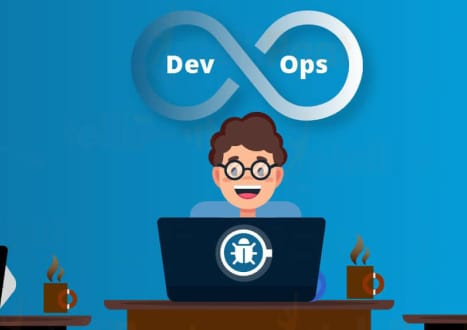
Top Amazon Certification Exams
- AWS Certified Solutions Architect - Associate SAA-C03
- AWS Certified Solutions Architect - Professional SAP-C02
- AWS Certified AI Practitioner AIF-C01
- AWS Certified Cloud Practitioner CLF-C02
- AWS Certified DevOps Engineer - Professional DOP-C02
- AWS Certified Machine Learning Engineer - Associate MLA-C01
- AWS Certified Data Engineer - Associate DEA-C01
- AWS Certified Developer - Associate DVA-C02
- AWS Certified Advanced Networking - Specialty ANS-C01
- AWS Certified Security - Specialty SCS-C02
- AWS Certified Machine Learning - Specialty
- AWS Certified CloudOps Engineer - Associate SOA-C03
- AWS Certified SysOps Administrator - Associate
- AWS-SysOps
Site Search:








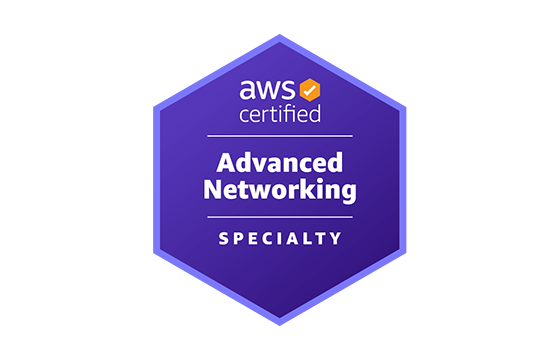



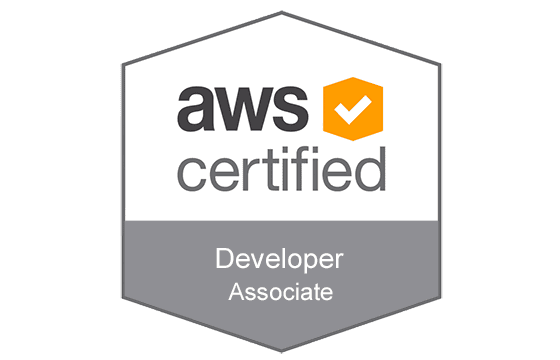
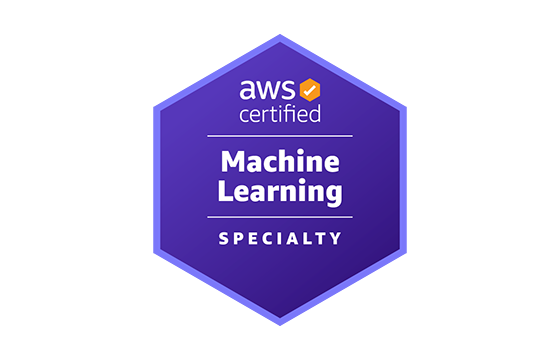

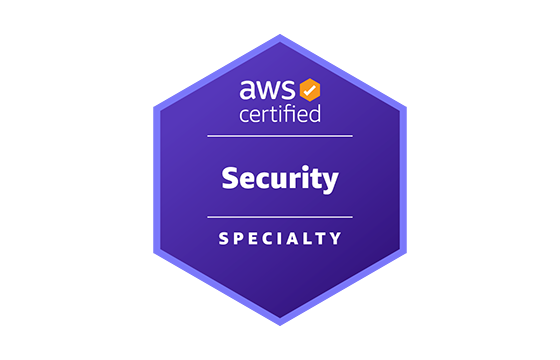
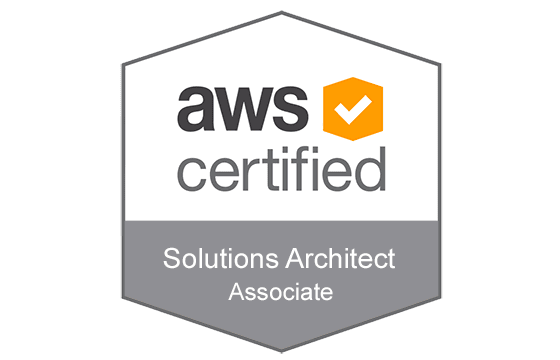
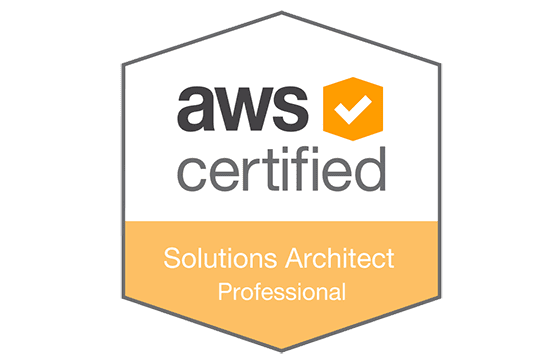
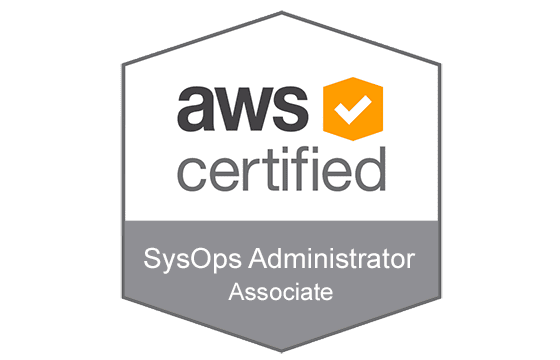
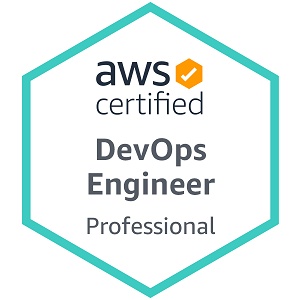



Yeah I would agree these questions are good preparatory material
@riley_roll, practicing with the questions and answers for AWS DevOps Engineer Professional exam is a great way to prepare… they will come in handy during your exam. I also used them and I achieved a notable pass… it was very exciting!!
any final tips before I take my exam in a few days? still think if i should use AWS DevOps Engineer Professional braindumps, will they be helpful?
thanks to the practice questions and answers for AWS DevOps Engineer Professional exam, I scored highly in it! my success is attributed to them. more thanks to examcollection
@philip_theo, yes, these exam dumps for Amazon AWS DevOps Engineer Professional exam didn’t disappoint me when I used them. I didn’t find any new questions in my real test… they will help you with no doubt! Still, don’t rely on them only, they serve as a supplementary study material! ;))
hi! are these AWS DevOps Engineer Professional dumps up to date?
i just thought i should mention that the AWS DevOps Engineer Professional vce files are still valid just to help out those who may be wondering. they helped me pass with ease
@Aarón,
Thanks for contacting us.
Please, sign in to your Account, find page with exam, then choose “Premium File” from the right menu on the exam’s page ("Training Products") and click on "Download Now":
https://www.examcollection.com/AWS-DevOps-Engineer-Professional.html
Hi guys, I hope all is well
I have a premium account and I want to download the premium exam file AWS DevOps Engineer Professional but this come into a bundle, can you share with me only the premium file?
Regards
--
Aarón Castellanos